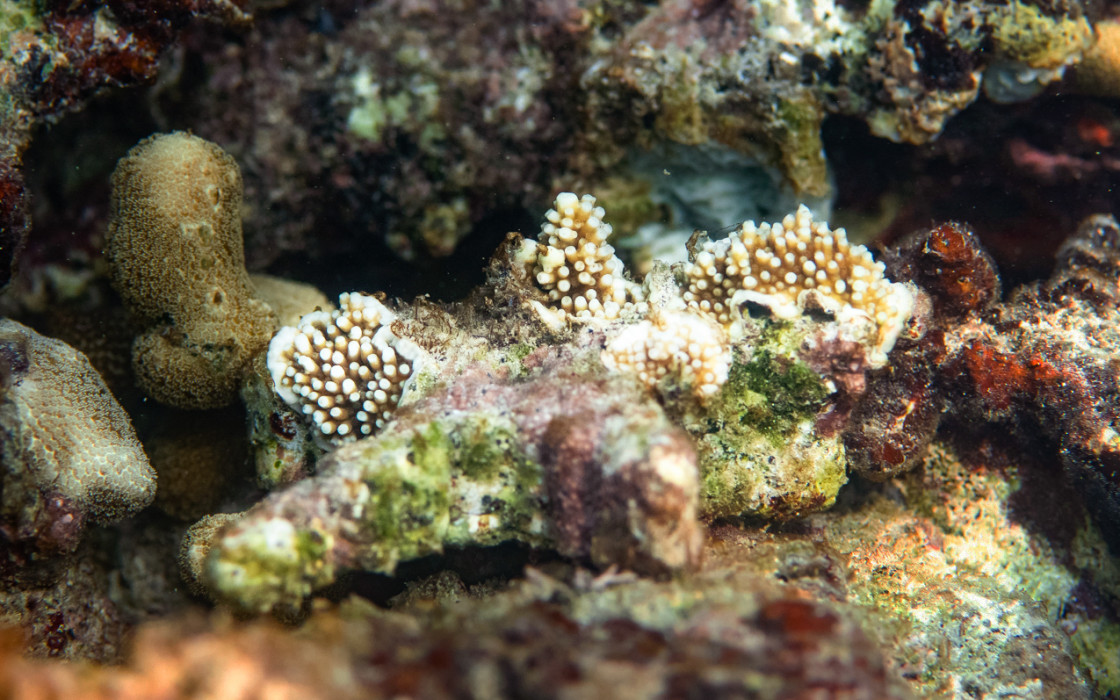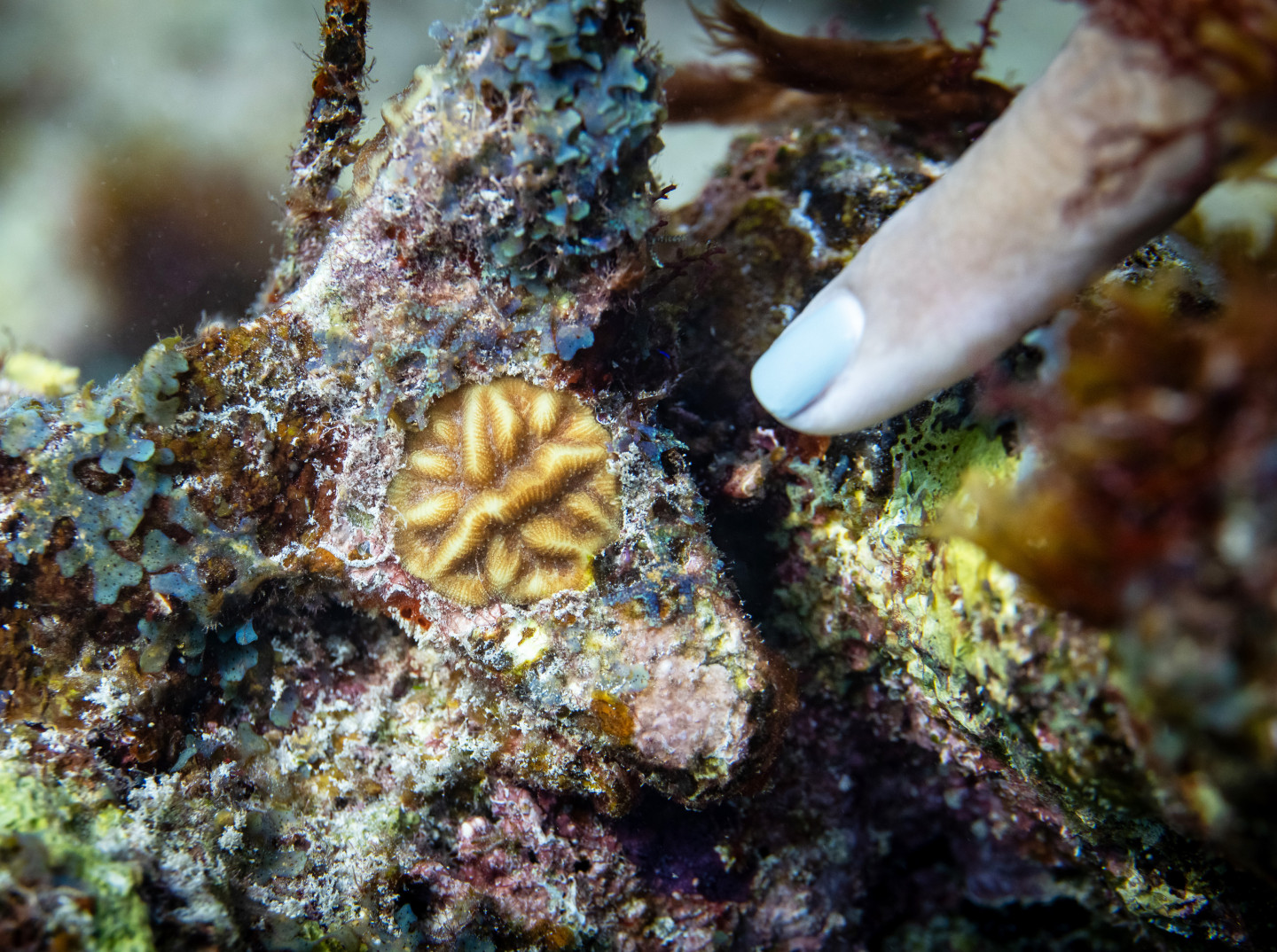Giving coral reefs a future
Corals have existed for millions of years, but now better protection alone is no longer enough to ensure their survival on a large scale. Combating climate change is a top priority. Then, local stress factors such as overfishing and pollution must be eliminated. At the same time, reefs must be actively supported by applying restoration.
For sustainable and successful reef restoration we need more research to develop innovative methods and technologies as well as active restoration of coral reefs to improve recovery and adaptation, and to maintain or restore biodiversity.
Investing in the restoration of coral reefs will also pay off economically, for example through self-sustaining coastal protection and income from fisheries. Ultimately, losing our reefs would be much more expensive than financing their future (UN Environment Program: The Coral Reef Economy).

Mitigating the impact of climate change
Time is pressing: This "decade likely offers the last chance for international, regional, national, and local entities to change the trajectory of coral reefs from heading towards world-wide collapse to heading towards slow but steady recovery." (Rebuilding coral reefs – a decadal challenge).
We must give the corals time so that they can eventually spread again! Because the overriding threat to the reefs is climate change: ocean acidification and, above all, global warming. It is therefore essential to meet the agreed climate targets and reduce emissions of climate-damaging greenhouse gases. Life on our planet, the preservation of important ecosystems and biodiversity - as well as our very own future - should be close to our hearts. (Report on Climate Change 2023 by the International Panel of Climate Change).
Protecting the remaining reefs - reducing stress on site
Our coral reefs need all the strength they can get. It is therefore important to reduce local stress factors as much as possible - ideally to eliminate them altogether.
Corals need clean water! Therefore, any marine pollution should be avoided, Measures are needed to reduce waste, chemicals and sediments entering the sea. This includes improving wastewater treatment, promoting recycling and avoiding disposable products. Especially on the coasts, construction projects of all kinds, as well as raw material extraction, can damage the reefs. Tropical downpours wash the resulting sediments into the sea and the algae symbionts of the corals receive too little light to photosynthesize. These interventions must therefore be planned a way that sediment input into the sea is avoided. In some places, the corals themselves, the limestone of their skeletons, have also been used as building material - as in the construction of the airport in the Maldives.
Overfishing is a common fact for the reefs and is a dangerous interference with the ecosystem. A coral reef is a team effort. The team also includes algae-eating fish and sea urchins. If these grazers are removed from the reef, stony corals cannot withstand the competition with algae.
Protection of the remaining reefs - refugees
In order to avoid overfishing, fishing quotas, closed seasons and protection zones must be introduced (Marine Protection Areas). The acceptance of the population, which is dependent on fishing, is key. Networks of many small and protected areas interspersed with usable zones have therefore proved successful. This allows local residents to catch fish and the fishing zones can be repopulated from the protected zones. A good compromise if complete protection is not possible.
And they still exist, the intact reefs! Remote and protected, the Kingman Reef in the central Pacific, for example, shows impressive resistance to climate change. The coral colonies are large and healthy, and the water is teeming with fish. Although storms and increased water temperatures also left their mark here, the corals recovered quickly. This shows that there are still reefs far away from human influence that have the potential to survive and can certainly withstand climate change. We should therefore protect these reefs in particular, which are still largely intact and have a good chance of surviving the effects of climate change better due to their location.
Reef restoration
However, better protection alone is no longer enough to ensure the survival of the reefs – “Marine Protected Areas do not buffer corals from bleaching under global warming” a study shows.
Therefore, reef restoration measures are often necessary. So far, fragmentation has been the main method used. Fragments of coral, e.g. caused by storms or cut off by hand, are used for restoration. These fragments are, so to speak, “cuttings” (analogous to plant breeding; even if corals are animals), i.e. clones of the parent colonies and not created by natural reproduction. Local projects can be successful under good conditions and offer opportunities to involve the local population. This is important to achieve better acceptance of reef protection measures among the people.
One such successful project is "MARS Symbioscience". In 2013, a project to restore a coral reef on the island of Badi was launched, not far from the Indonesian city of Makassar. The coral reef, which covers around 7,000 m², had been destroyed by dynamite fishing 30 years previously and has not recovered since. Within three years, a densely overgrown reef was created; fishermen became reef protectors and the local fish populations recovered - also thanks to an inner protection zone.
Breeding corals for reef restoration
Utilizing bred corals for the reforestation of reefs has only been implemented on a large scale in recent years. The Coral Seeding approach used here was developed by the non-profit organization SECORE International. Coral larvae are reared in floating nurseries from coral spawn collected in the reef. The resulting corals are then released into damaged reef areas.
The use of natural coral reproduction not only promotes genetic diversity and thus preserves the coral's potential to adapt to changing environmental conditions (coral resilience). It also enables the mass production of coral babies.
SECORE pursues a two-pronged strategy in the application of coral seeding: on the one hand, local partners are trained to use coral seeding sustainably, and on the other hand, methods and technologies are further developed and innovations are implemented as soon as they become available.
And there is indeed reason for hope: many young, bred corals that were put on reefs throughout the Caribbean survived the devastating heat wave of 2023 unscathed. So far, SECORE has implemented its Coral Seeding approach with partners throughout the Caribbean basin and is in the process of advancing its application in the Indian Ocean and Pacific.
Reserach: searching for the super coral
Some coral species can adapt to the worsened conditions and thrive besides high temperatures, acidic water and poor light conditions. There are more heat-tolerant strains of symbiotic algae too. Research laboratories are already trying to breed so-called “super corals" from resistant species. The researchers are applying "assisted evolution", which in principle corresponds to classical breeding: Individuals with preferred characteristics are intentionally bred - such as certain coat colors in dogs, or plants that are more resistant to disease. At some point, such super corals could become the anchor to sustain the function of coral communities and thus supporting the survival of coral reefs as a whole.
One innovative idea is the construction of a hybrid reef off the coast of Florida. This project would actually represent a major intervention into the reef ecosystem, however, unfortunately there is not much left of Florida’s reefs. The X-Reefs project is a joint project within the framework of the Reefense Program of DARPA, a research branch of the US Department of Defense, and the focus lays on coastal protection. This reef is to be colonized with temperature-tolerant corals, which will later maintain the reef through their growth. A team of well-known scientists from various institutions is working at full speed on this. It is possibly the last resort to save reefs there.
Migration of coral reefs
Animal and plant species react to climate change by migrating to climatically more suitable distribution areas. The migration almost always takes place poleward. This also applies to corals. As it can be witnessed in southern Japan, approximately 600 km north of the most species-rich marine area on earth: the Coral Triangle of which the northern tip is the Philippines. From here, the Kuroshio Current drifts warm water as well as coral and fish larvae all the way to Tokyo. No wonder there are extensive coral reefs around the southern Japanese Ryūkyū Islands of the Okinawa Prefecture. These are among the northernmost reefs in the world and have already successfully migrated to the cooler subtropics. But even here, the reefs almost completely bleached in 2016. Corals in cooler regions must therefore also develop strategies to combat climate change, and they are.
A long-term study revealed that corals have been migrating northwards at a rate of 14 km/year since the 1930s, displacing algae and seaweed growth from southern Japan to Tokyo. Among the migrants you’ll find climate refugees from the tropics, still most are corals that were already indigenous and are now becoming established in new reefs. Two important tropical reef-building coral species have been detected in larger populations. We view corals as the big losers of climate change. This is justifiable as far as the tropics are concerned, but in Japan it is becoming apparent that some coral species can also adjust, making the leap from the tropics to the subtropics.
What can I do?
The IPCC climate report from September 2019 urgently warns that even a warming of 1.5 °C (3.3°F) poses a major risk to coral reefs. Any mitigation and removal of CO2 from the atmosphere is therefore the top priority. We can all reduce our own ecological footprint (carbon footprint calculator). Urgent action is also needed in politics and business. In a democracy, everyone has the opportunity to influence decision making, i.e. to elect politicians who are committed to taking effective measures to deal with climate change.
Spread the word!
And it is also important to raise awareness of the dire situation of coral reefs: Talk to your family, friends, and colleagues why we cannot afford to lose these wonderful, diverse and valuable ecosystems!
This text was written by Heinz Krimmer and Dr. Carin Jantzen as part of a joint project with Patagonia Marina, Dr. Vreni Häussermann and Günther Förterra, to raise public awareness of the global climate crisis and its impact on coral reefs. Its third part was originally published here.
What do coral reefs look like - a cinematic introduction!
A day in the reef, what happens in a reef within 24h?
Dive IN serial - put your head underwater digitally:
· hide and seek, the reef inhabitants
· coral love night, the corals’s mass spawning event
Together we give coral reefs a future - how to apply Coral Seeding on meaningful scales
Rebuilding coral reefs in the Dominican Republic, the success of FUNDEMAR & SECORE
Chasing Coral, Trailer, the coral thriller, free-streaming on Netflix

